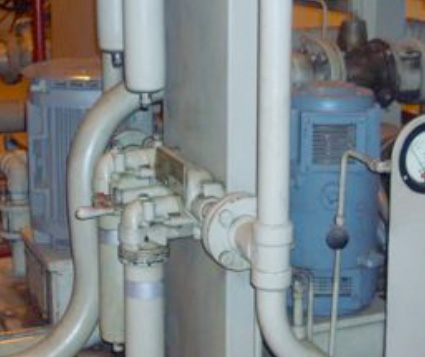Inadequate Oil Supply: When a Backup isn’t a Backup
This is Part One of a three part series on steam turbine tips, discussing the challenge of inadequate oil supply.
The International Association of Engineering Insurers has found that the loss of oil pressure causes the highest frequency of failure in steam turbines worldwide.
 Most of these steam turbine failures are caused by an unreliable backup system to maintain oil pressure to the bearings should the primary AC-driven lube oil pumps fail. These AC motors are powered by either the turbine’s output or the grid—causing a failure if the turbine or generator trips—or if there is an external outage.
Most of these steam turbine failures are caused by an unreliable backup system to maintain oil pressure to the bearings should the primary AC-driven lube oil pumps fail. These AC motors are powered by either the turbine’s output or the grid—causing a failure if the turbine or generator trips—or if there is an external outage.
Modern turbines have backup powered DC oil pumps mounted on the oil tank, which are triggered by a pressure switch in the event of a loss in oil pressure. With this in mind, it is very important to conduct tests with the AC and DC oil pumps during scheduled maintenance inspections to ensure that the DC pump engages as required.
Such tests can be referred to as cascade pump pressure inspections. In addition, the tests will confirm the pressures when the DC oil pump will engage after the AC oil pump is actually turned off.
Another best practice is to verify backup batteries on a regular basis, when the unit is down, and mandatory tests should be performed before the unit is placed in operation after an overhaul.
Older turbines can use steam-driven pumps as backup. On these designs, a pressure regulator will sense the drop-in bearing oil pressure and turn on the steam supply to the blade wheel of the pump. But while these pumps are usually very reliable, they still must be manually tested on a regular basis and after an overhaul.
Care must also be taken to not overspeed the pump or it will potentially cause internal component damage and may even completely destroy the pump.
Some older turbines use gravity lube oil tanks. These tanks are mounted above the unit on stands and are controlled by a check valve type of arrangement. In such cases, there are no pumps involved—gravity provides the bearings with sufficient lubrication in an emergency situation. While less complicated than DC or steam powered backups, their operation must still be routinely checked.
The bottom line is, that a backup is not a backup unless it is reliable. And it can only be reliable if it is tested.
Do you have questions about your steam turbine backup system? Contact PSG today to explore how we can provide support and maintenance options to help you avoid backup system problems.
